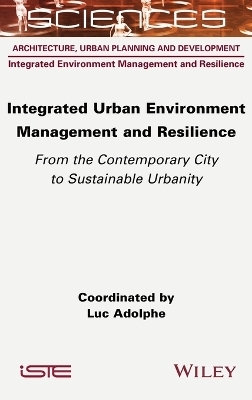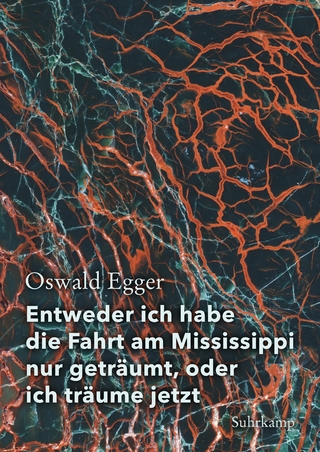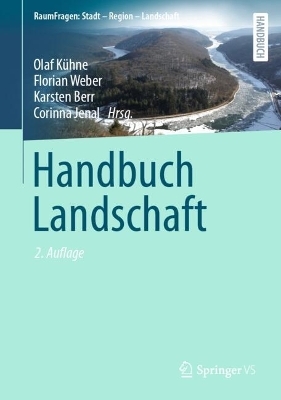
Integrated Urban Environment Management and Resilience
Iste Ltd (Verlag)
978-1-78945-077-4 (ISBN)
We propose the morpho-sociological approach, which gives a representation of the state of the contemporary city and the conditions of its production; the geographical approach with the problems of development and the sharing of these areas; the economic approach with the modalities specific to a development model, making urban composition the answer to the problems of the sustainable city; and the sociological approach when it comes up against the effects of the now dominant digital world.
Luc Adolphe is a professor at the Laboratoire de Recherche en Architecture within the École Nationale Supérieure d'Architecture de Toulouse, France, as well as a DPLG-registered architect and a TPE engineer. His research focuses on the city studied from a systemic and interdisciplinary perspective.
Introduction ix
Jean-Pierre MIGNOT and Marc MÉQUIGNON
Chapter 1 Morpho-Sociological Approach to the City 1
Marc MÉQUIGNON and Patrizia LAUDATI
1.1 Introduction: socio-morphological analysis as a tool for understanding the city 1
1.2 The city’s modes of production 3
1.2.1 Combining different modes 7
1.2.2 Urban sprawl and morphological changes 8
1.3 Difficulties of apprehension 11
1.4 The city: object or subject? 12
1.5 The shapes and form of the city 13
1.6 Representations of the city: “drawings and designs” 14
1.6.1 Drawings 14
1.6.2 Designs 17
1.7 The constituent elements of the city 18
1.7.1 Limits 18
1.7.2 Structure 19
1.7.3 Layout 22
1.7.4 Plot division and private property 26
1.7.5 The city block 28
1.7.6 The street 34
1.7.7 The square 39
1.7.8 Unique elements 41
1.8 Conclusion 44
1.9 References 45
Chapter 2 Space, Production and Urban Forms 49
Jean-Pierre MIGNOT
2.1 General introduction 49
2.2 The city between space and time 51
2.2.1 Back to the concept of space 52
2.2.2 Produced urban space and social production 63
2.2.3 Mode of production, production relationships and urban composition: the weight of history 67
2.3 Forms of accumulation and urban forms 71
2.3.1 Capitalism, regulation and the regime of accumulation 71
2.3.2 Fordist accumulation and urban growth 76
2.3.3 Digitization and service accumulation 83
2.4 Urban space, environment and resilience 91
2.4.1 Demography and urbanization: a major challenge for the environment 94
2.4.2 From the Fordist city to the sustainable city: a gamble? 102
2.4.3 Cities and resilience 107
2.5 The city under the regime of service accumulation 111
2.5.1 From the center to the periphery or the peripheral expansion of commerce 112
2.5.2 Smart city and sustainable city 115
2.6 A provisional conclusion 123
2.7 References 124
Chapter 3 A Territorial Approach to Urban Spaces between Sustainability and Liveability 129
Fabrice ESCAFFRE, Mélanie GAMBINO and Sinda HAOUÈS-JOUVE
3.1 Urban diversification and transformation 131
3.1.1 The criteria for necessary urban differentiation 132
3.1.2 Urbanization as a global phenomenon 134
3.2 The urban issue through the prism of housing 137
3.2.1 Urban housing in transformation 137
3.2.2 Housing policies in question 139
3.3 Urban spaces and mobilities 144
3.3.1 Residential mobility 144
3.3.2 Daily and leisure urban mobility 146
3.4 An urban agriculture… 150
3.4.1 Multifunctional urban agriculture 152
3.4.2 … But a diversified agriculture 154
3.4.3 Six types of urban agriculture activities 155
3.4.4 The establishment of food governance 158
3.4.5 The sustainability challenges for urban agriculture 159
3.5 The interface between urban spaces and climate 160
3.5.1 The city and climate change 161
3.5.2 Mobility and buildings: prime urban targets for mitigation 164
3.5.3 The urban microclimate: a new challenge for urban livability 165
3.5.4 Putting the climate issue on the urban policy agenda 168
3.5.5 How does this translate into urban planning practices? 171
3.6 Conclusion 175
3.7 References 176
Chapter 4 The City: A Space for Tensions in Modernity 183
Yann FERGUSON
4.1 Living together in urban societies 185
4.1.1 City dwellers: liberated, but with a weakened collective conscience 186
4.1.2 The diversity of the urban population: a threat to the social connection? 192
4.1.3 Producing urban solidarity 196
4.2 The socio-spatial dynamics of the urban population 202
4.2.1 The fragmentation of urban society from above 202
4.2.2 The fragmentation of urban society from below 209
4.2.3 The disunity of the city 214
4.3 The city in search of sustainability 222
4.3.1 City and nature: an unlikely union 223
4.3.2 The sustainable urban project: the city as a solution 231
4.4 References 241
List of Authors 247
Index 249
| Erscheinungsdatum | 30.09.2022 |
|---|---|
| Verlagsort | London |
| Sprache | englisch |
| Maße | 10 x 10 mm |
| Gewicht | 454 g |
| Themenwelt | Naturwissenschaften ► Geowissenschaften ► Geografie / Kartografie |
| Recht / Steuern ► EU / Internationales Recht | |
| Technik ► Bauwesen | |
| ISBN-10 | 1-78945-077-2 / 1789450772 |
| ISBN-13 | 978-1-78945-077-4 / 9781789450774 |
| Zustand | Neuware |
| Haben Sie eine Frage zum Produkt? |
aus dem Bereich


